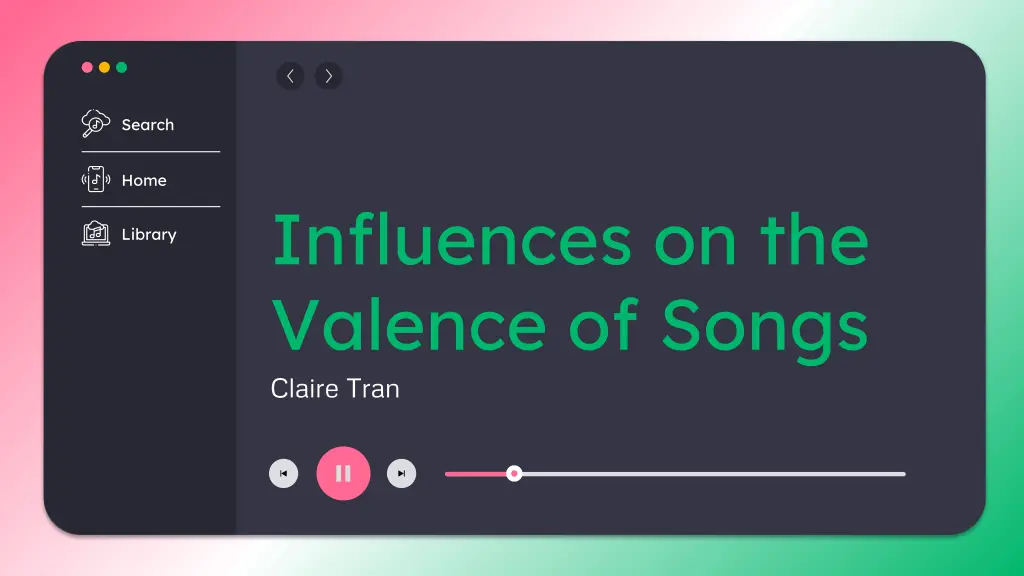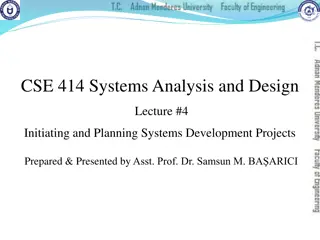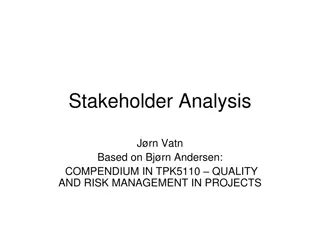
Influences on Valence of Songs by Claire Tran: Analysis & Techniques
Explore the factors influencing the emotional tone of songs in Claire Tran's study. Discover the statistical techniques used to analyze these influences, including danceability, tempo, energy, acousticness, instrumentalness, and more.
Uploaded on | 1 Views
Download Presentation

Please find below an Image/Link to download the presentation.
The content on the website is provided AS IS for your information and personal use only. It may not be sold, licensed, or shared on other websites without obtaining consent from the author. If you encounter any issues during the download, it is possible that the publisher has removed the file from their server.
You are allowed to download the files provided on this website for personal or commercial use, subject to the condition that they are used lawfully. All files are the property of their respective owners.
The content on the website is provided AS IS for your information and personal use only. It may not be sold, licensed, or shared on other websites without obtaining consent from the author.
E N D
Presentation Transcript
Search Home Influences on the Valence of Songs Claire Tran Library
Table of contents 01 02 Goal and Motivation Data Source 03 04 Statistical Techniques and Analysis Conclusion
01 Search Home Library Goal/Motivation
Goal and Motivation What characteristic of a song most influences the valence, the emotion, of a song? Motivation is driven to understand what feature of a song impacts the emotional tone to understand the psychological implications and to understand mood-based playlists
02 Search Home Library Data Source
Factors Dancebility Tempo Danceability based on a combination of musical elements including tempo, rhythm stability, beat strength, and overall regularity. A value of 0.0 is least danceable and 1.0 is most danceable The overall estimated tempo of a track in beats per minute (BPM). In musical terminology, tempo is the speed of a given piece and derives directly from the average beat duration Energy Energy is a measure from 0.0 to 1.0 and represents a perceptual measure of intensity and activity. For example, death metal has high energy, while a Bach prelude scores low on the scale Acousticness A confidence measure from 0.0 to 1.0 of whether the track is acoustic. 1.0 represents high confidence the track is acoustic Instramentalness Loudness The overall loudness of a track in decibels (dB) Predicts whether a track contains no vocals. "Ooh" and "aah" sounds are treated as instrumental in this context. The closer the instrumentalness value is to 1.0, the greater likelihood the track contains no vocal content
03 Search Home Library Statistical Techniques and Analysis
Statistical Techniques Pearson Correlation Coefficient & p-test Bootstrap Resample the data to estimate the sampling distribution of a statistic by repeatedly sampling from oberserved data with replacement Strength and significance of linear relationship between 2 variables Multilinear analysis Jackknife Resamples the data to determine if there s bias by systematically leaving out 1 obersvation at a time Helps account for varying levels of importance (weights) associated with different factors
Correlation Coefficient r = 0.4981 p = 0 r = 0.2718 p = 0 r = 0.3080 p = 0 r = 0.0543 p = 0.2257 r = 0.060 p = 0.1802 r = -0.1124 p = 0.0119
Danceability Energy Bootstrap (slope and intercept) Loudness Tempo Instramentalness Acousticness
Danceability Energy Jackknife (slope and intercept) Loudness Tempo Instramentalness Acousticness
Weighted Regression X = [dance, energy, loudness, instramentalness]; [beta, bint] = regress(valence, X); Danceability Loudness Energy beta = 0.2055 Instramentalness beta = 0.1780 beta = 0.6142 beta = 0.0085 bint = [0.1037, 0.2523] bint = [0.1347, 0.2762 ] bint = [0.5192, 0.7092 ] bint = [-0.0045, 0.0125 ]
04 Search Home Library Conclusion
Conclusions Search Unexpected result for Danceability and Tempo Home Library Correlation between loudness and energy to valence Negative relationship between valence and instramentalness
Search Home Questions? Library













![Project Initiation Document for [Insert.Project.name] [Insert.Project.number]](/thumb/226757/project-initiation-document-for-insert-project-name-insert-project-number.jpg)








